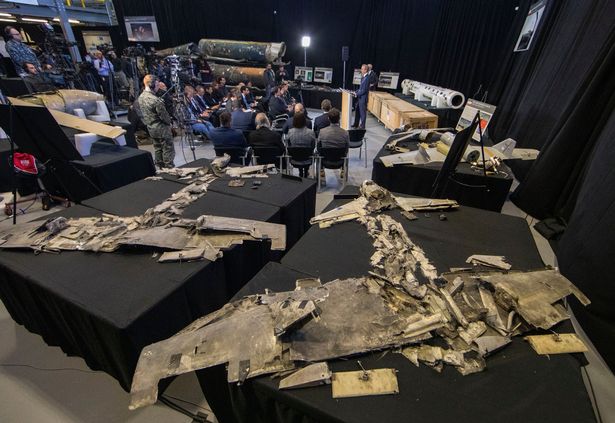December 21, 2018
The United States has put on another display of Iranian weapons found being used by the Taliban in Afghanistan and by Houthi rebels in Yemen.

Since 2007, a UN resolution has barred Iran from selling or even giving its weapons to others. The Obama Administration periodically complained about Iranian weapons sales, but the Trump Administration has been much more vocal and appears to want to use the sales to bring greater international pressure on the Islamic Republic.
The latest display of what the US government says are Iranian-supplied weapons and materials follows a similar exhibition last year when the weapons were unveiled by the US ambassador to the UN, Nikki Haley.
Defense officials told CNN November 28 that the firing of Iranian-made missiles into Saudi Arabia continues, and they showed one such missile, identified as a Qiam-1, which they said was fired just five days after Haley’s speech.
The firing of that missile “highlights the brazenness and provocativeness” of the Houthis and their Iranian backers, the acting Assistant Security of Defense for International Security Affairs, Katie Wheelbarger, told reporters.
The officials said that they believe the Houthis have fired at least eight such missiles into Saudi Arabia since July 2017.
Officials say the missile’s lack of stabilizer fins and other aspects of its engineering are proof that it originated in Iran, saying Iran is the only country in the world that manufactures these types of missiles, which use what officials called a “wind bolt,” a unique Iranian design.
The officials said the missile’s guidance system also indicated an Iranian origin. And they also showed reporters imagery of the inside of the missile with a quality assurance sticker that bore the markings of an Iranian state-owned manufacturer, Shahid Bagheri Industries. Officials said the markings pointed to a post-2015 production date—long after the UN ban went into effect. (Some have defended Iran by saying it wasn’t known if the weapons were provided to Yemen by Iran before or after the UN ban.)
Wheelbarger told reporters that members of Congress have been invited to view the evidence and that one reason for the display is to educate international and domestic audiences about the threat posed by Iran.
She called the display “an opportunity to show to the world some of the activities we know Iran does to bring instability and chaos to the region.”
She said the weapons are “evidence of Iran’s proliferation of advanced conventional weapons primarily, in violation of UN Security Council Resolutions that have been in place since 2007.”
An Iranian-made surface-to-air missile, known as a Sayyad-2, was also on display with US defense officials saying it had been intercepted in Yemen by Saudi Arabia in early 2018 while it was still in its shipping crate.
Similarly, two Iranian made Qasef-1 drones were on display, which officials said were recovered after carrying out attacks on targets in Saudi Arabia, including the town of Jazan and the Abha International Airport.
The display also pointed to Iranian activities elsewhere that officials described as destabilizing.
An Iranian-made drone, a Shahed-123, was featured. It was recovered by US-led coalition troops in Afghanistan in October 2016. Defense officials said imagery taken by the drone showed it had taken off from Zabol airfield in Iran and had flown over several US and Afghan military installations in Afghanistan, including Camp Bastion, Kandahar Airfield, and Forward Operating Base Laghman.
Defense officials also accused Iran of supplying small arms to militant groups in Afghanistan, Bahrain, Iraq, Syria and Yemen and said such arms had been discovered “in Afghanistan, Yemen, en route to Yemen, and in the hands of Shia militias in Bahrain.”
Included in some of the interdicted shipments were Iranian copies of anti-tank missiles, AK-47 automatic rifles, sniper rifles, machine guns and rocket-propelled grenade launchers, as well as grenades recovered from militias in Bahrain that bore Farsi writing.
Officials said that evidence of Iranian origin included the nature and placement of their serial numbers as well as the use of unique materials and colors.
The display also included rockets that officials said originated from Iran and were recovered from the Taliban by US-backed Afghan troops.
